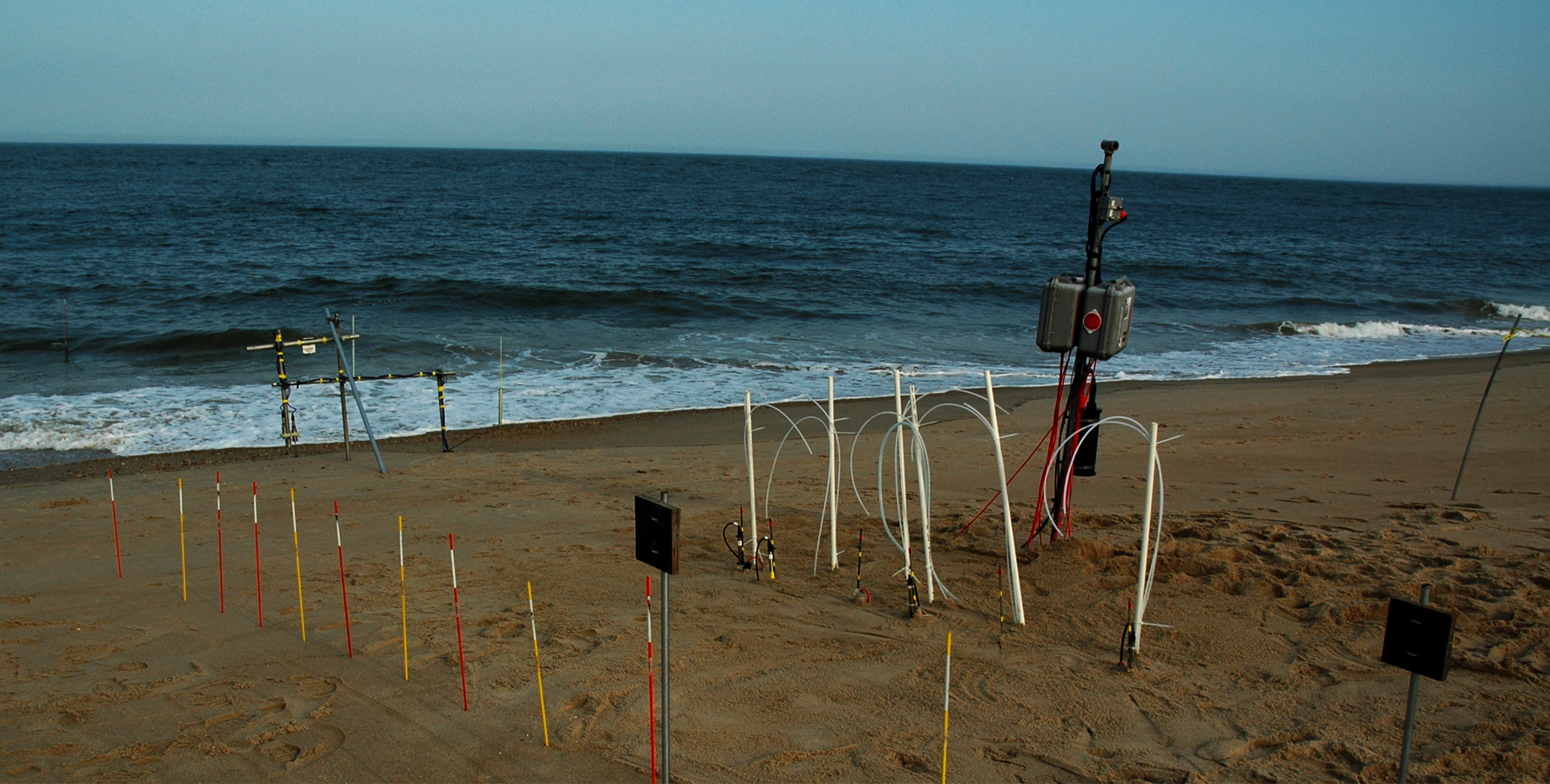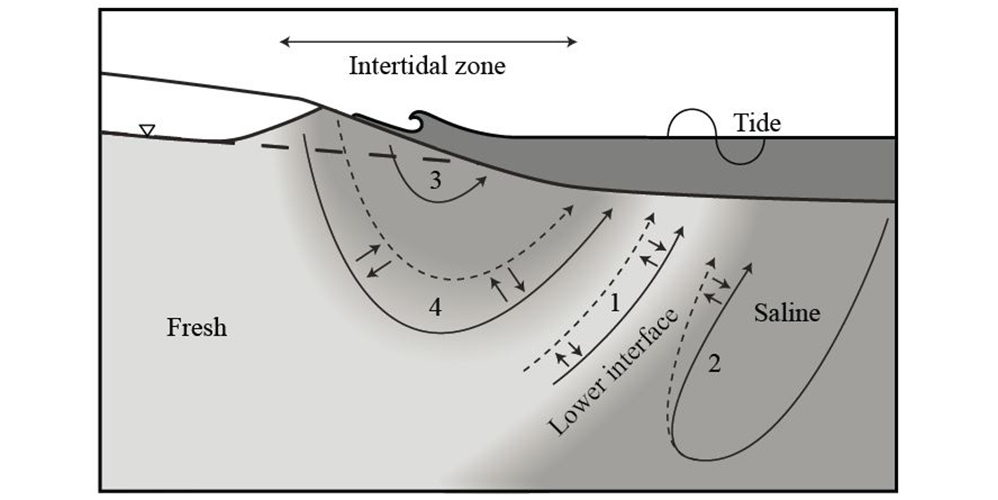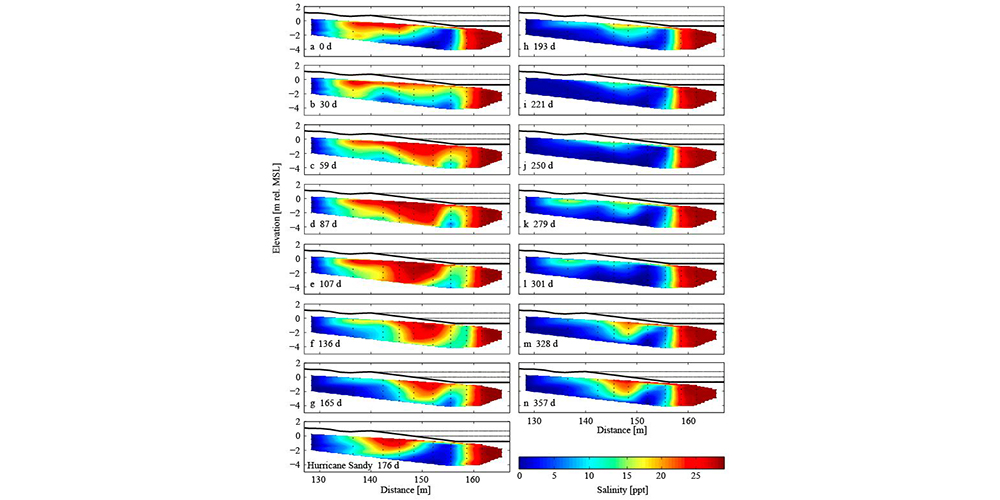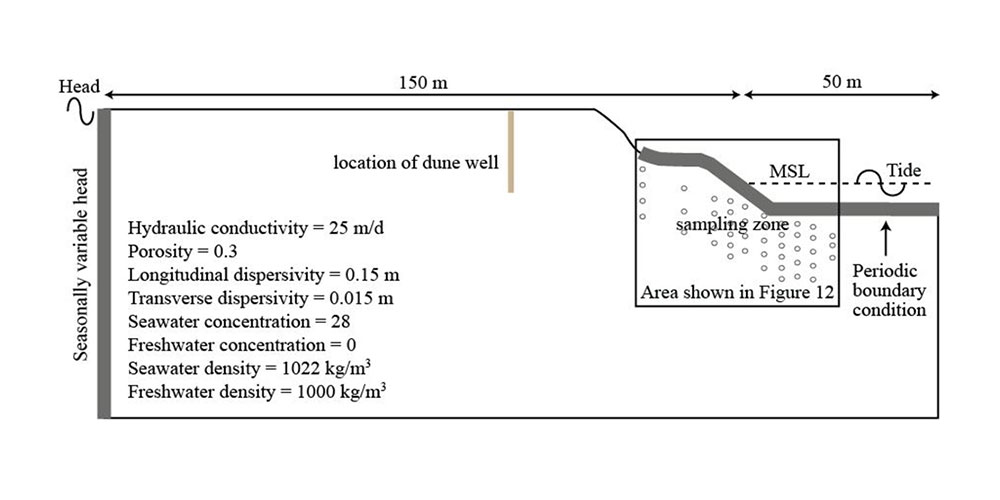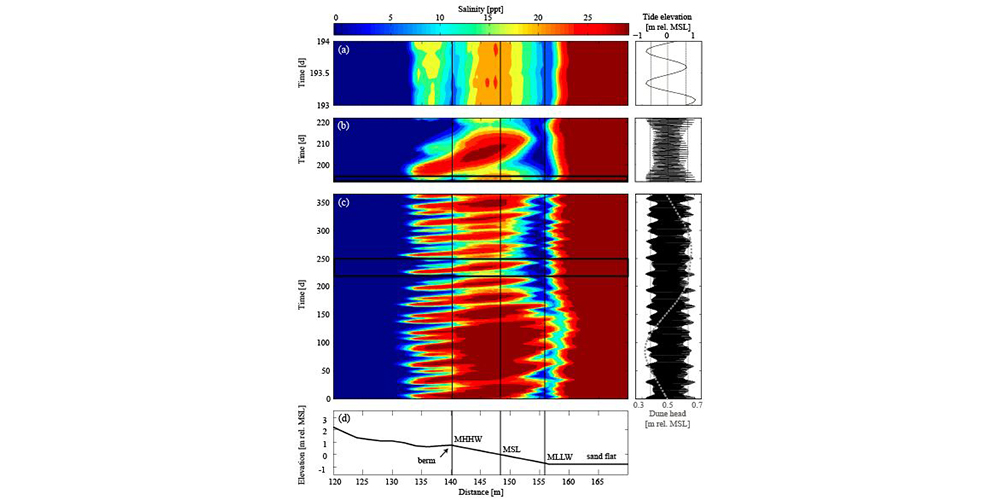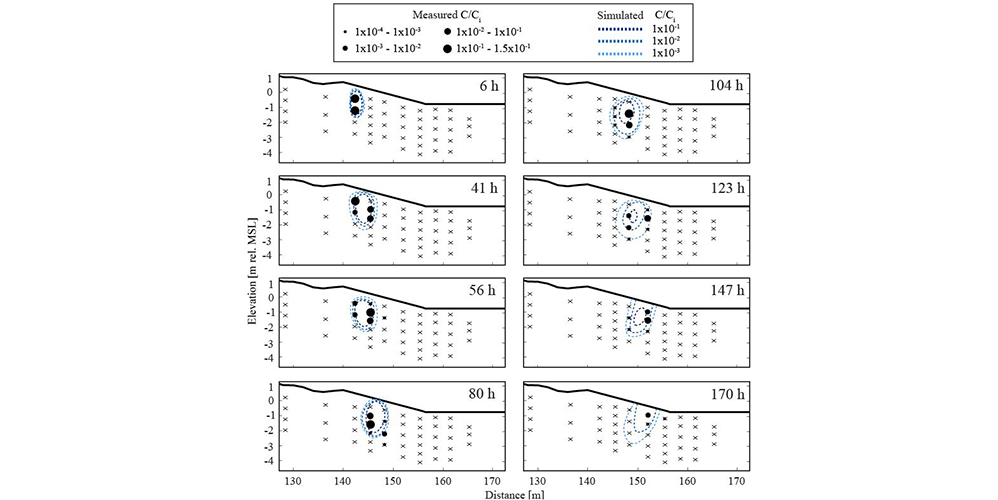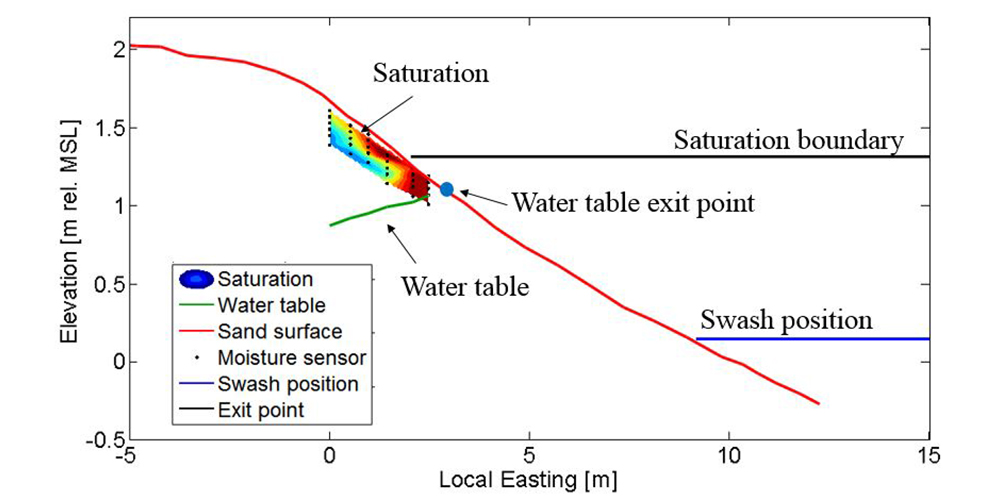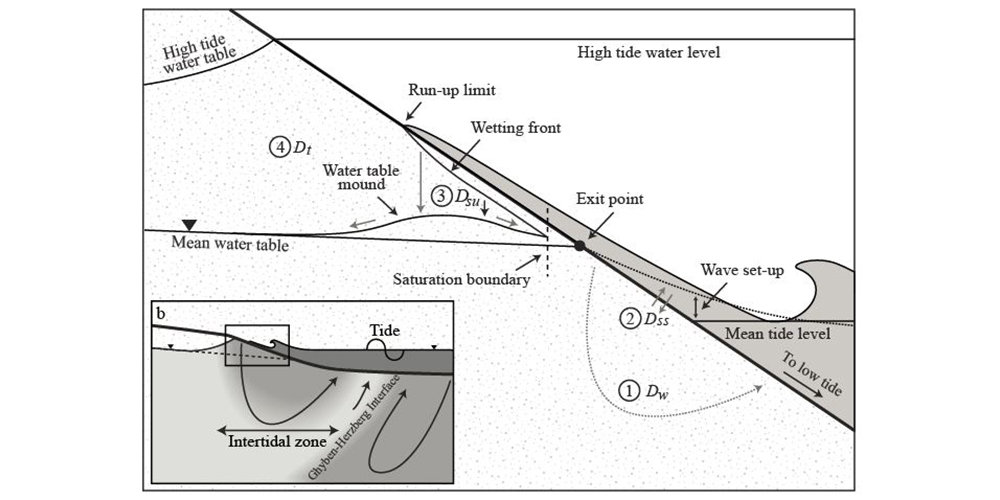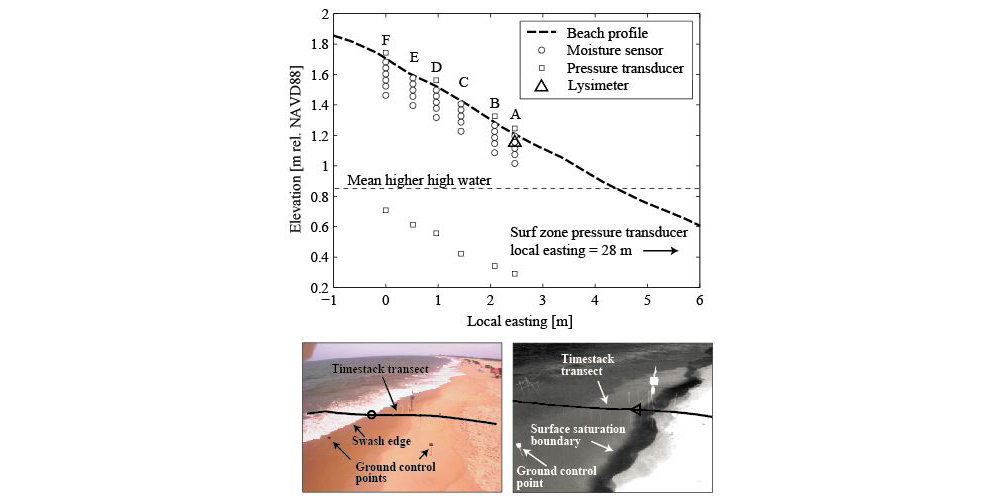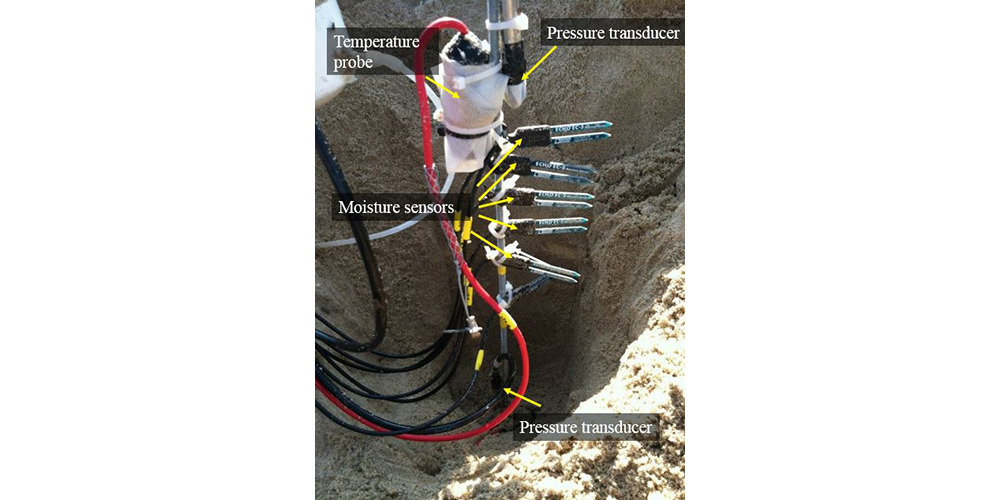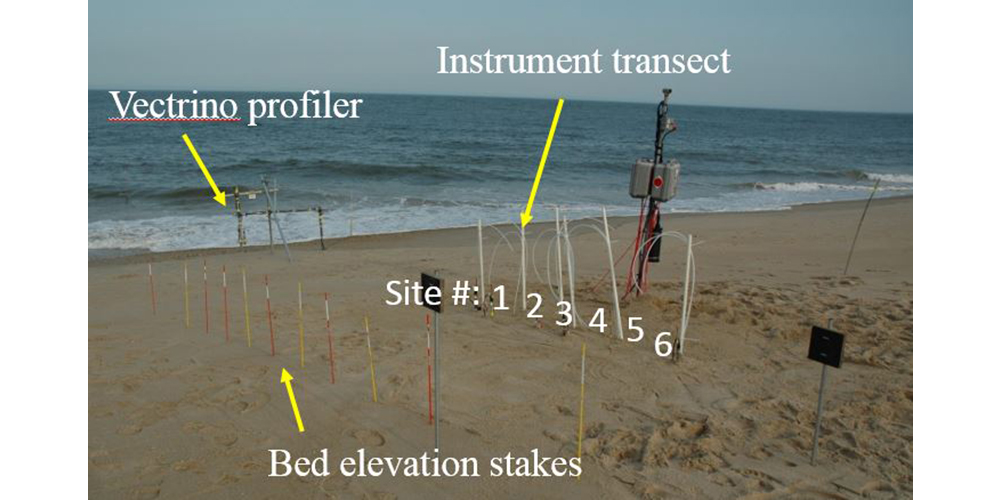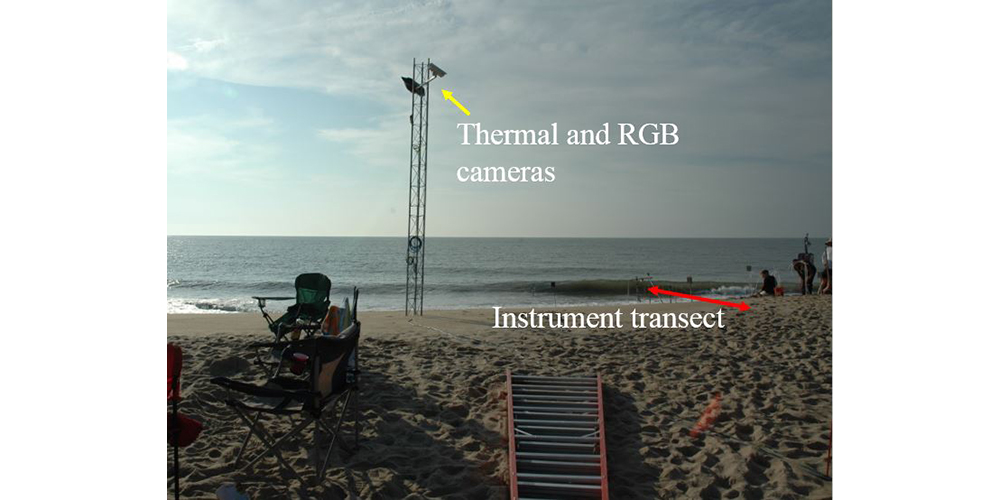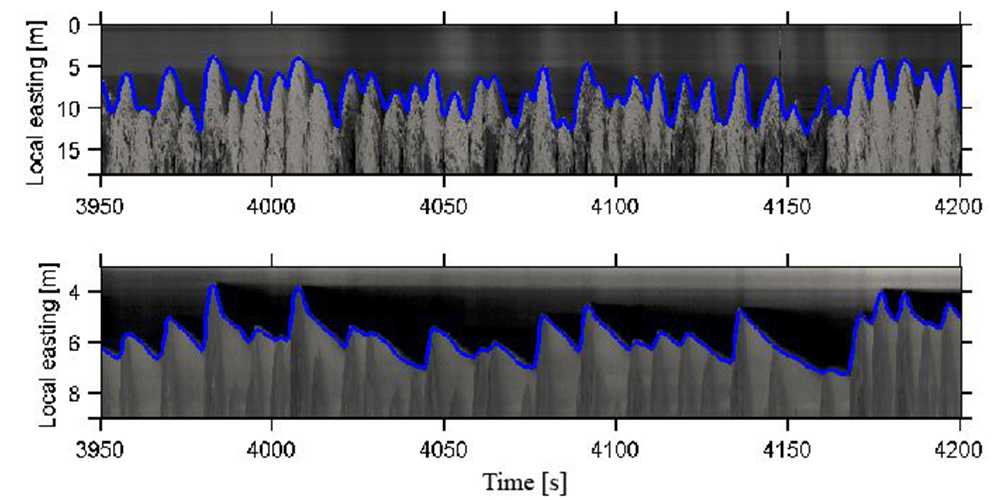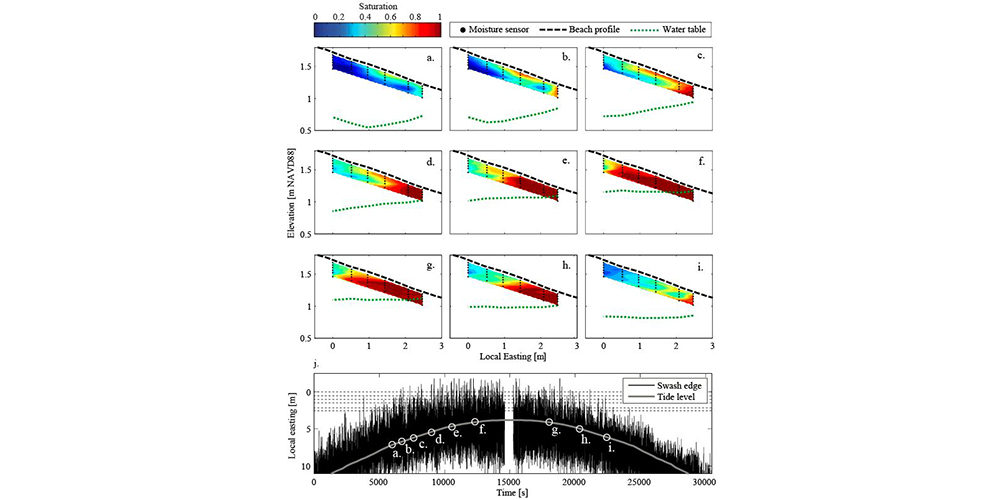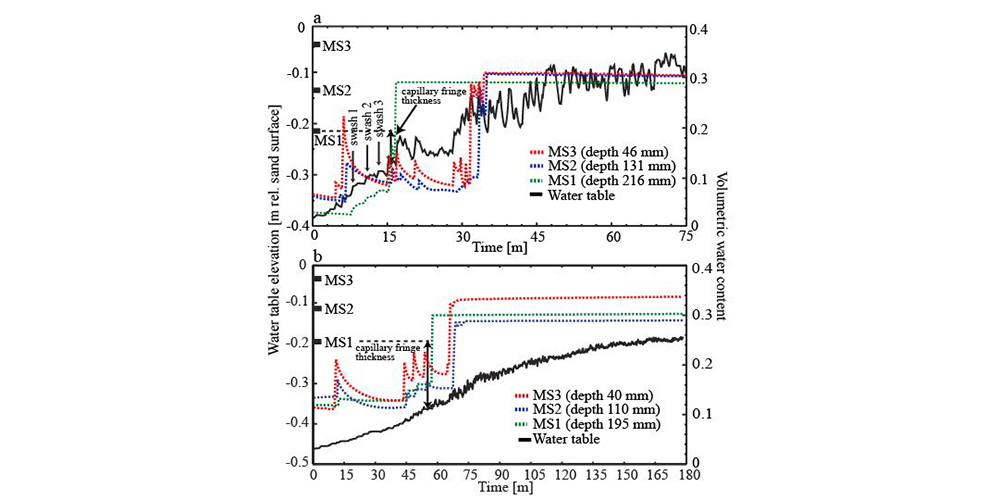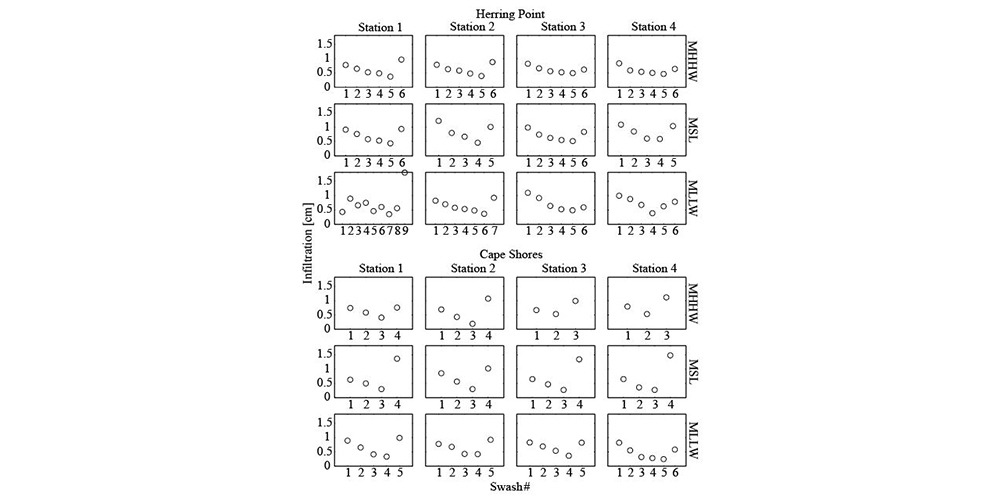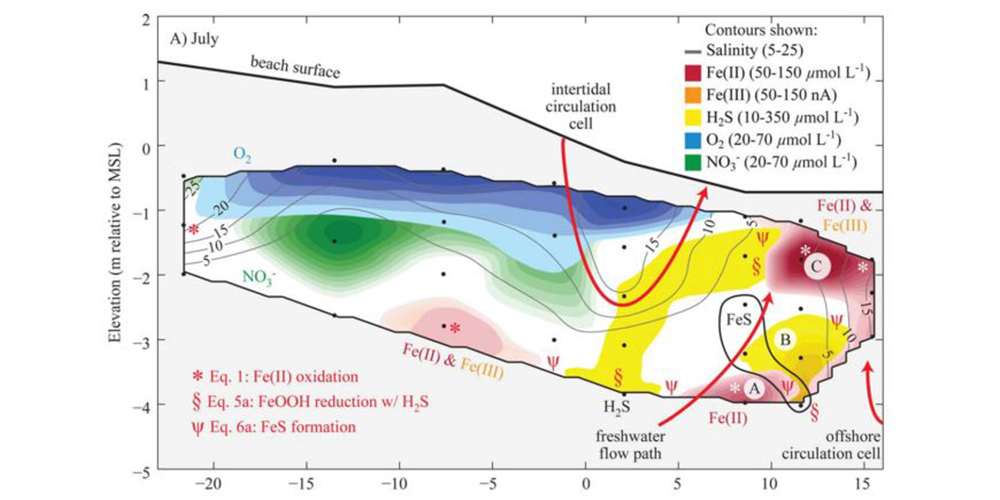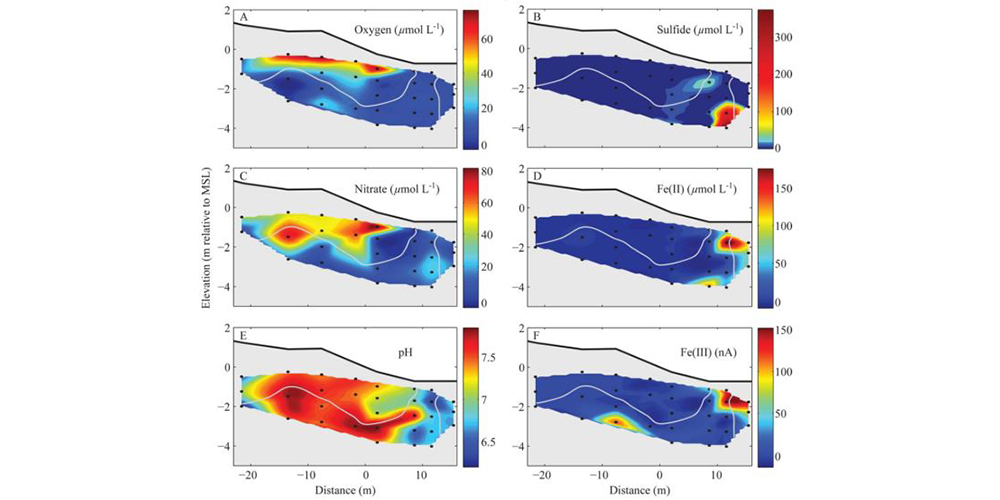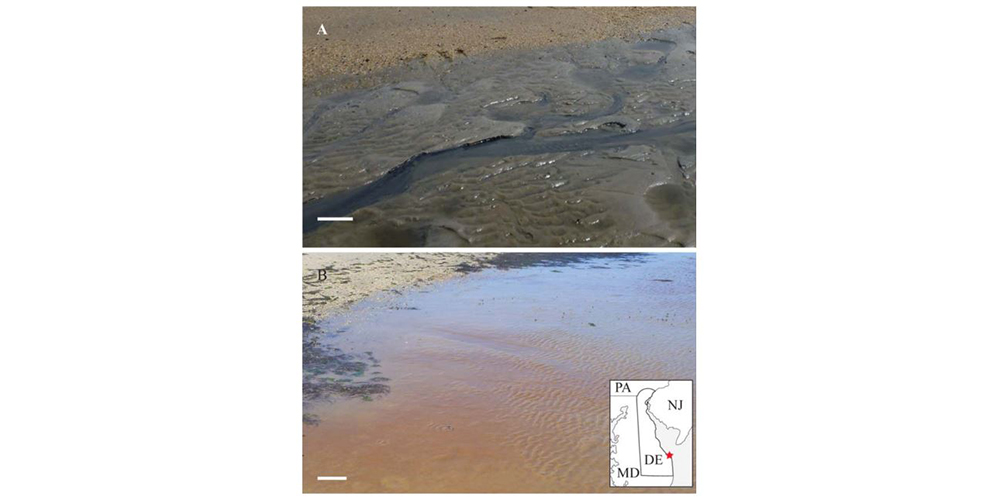Our research focuses on the hydrologic and geologic controls that drive groundwater flow, mixing, and nutrient cycling in nearshore aquifers. We are interested in the influence of waves, tides, terrestrial recharge, storm surges, sea level rise and other land-sea processes on the exchange of water and chemicals between the ocean and subsurface in estuarine, beach, bay, marsh, and marine environments.
Coastal Groundwater
Tides and waves in the presence of terrestrially-driven fresh groundwater discharge in the intertidal zone sets up a cell of circulating seawater in beach aquifers. Seawater infiltrates across the upper beachface and circulates downward and seaward before discharging near the low tide mark, mixing with underlying fresh groundwater along circulating flowpaths. We use a combination of field measurements and variable-density groundwater flow and solute transport models to investigate the rates, magnitudes, residence times, and the spatial and temporal dynamics of mixing between fresh and saline groundwater within beach aquifers. We also focus on identifying the role of longer-term and episodic drivers of change (e.g. sea level rise, storm surge, rainfall events, climate variability) on the quantity and quality of groundwater beneath the coastline.
The paper based on our work on salinity dynamics in beach aquifers was selected for AGU's Water Resources Research Editor's Choice Award, and was featured in EOS's Research Spotlight A New Level of Understanding for Coastal Aquifers, the Environmental Monitor, and the Delaware News Journal.
